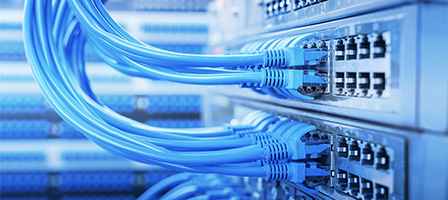Tax Pro Plus
2999 Overland Ave.
Suite 204
Los Angeles, CA 90064
Map It!
Ph: (310) 827-4829
Fax: (310) 842-7160
info@taxproplus-la.com
You Can Expense Business IT Purchases
 Article Highlights:
Article Highlights: - Depreciation
- Material & Supply Expensing
- De Minimis Safe Harbor Expensing
- Routine Maintenance
- Bonus Depreciation
- Section 179 Expensing
There are a number of ways to deduct IT costs, and the best method should be based upon the need for a current-year deduction, while also considering that the deductions may be more beneficial in a future year. So careful planning is required.
- Depreciate – The most conservative method of writing off the investment would be to depreciate the various pieces of equipment over the recovery period (useful life), designated by the IRS as being either 5 or 7 years, depending on the individual items. Generally, computers, copiers, and certain technological and research equipment are depreciated over 5 years, while office fixtures, furniture, and equipment are depreciated over 7 years.
- Material & Supply Expensing – Capitalization and repair regulations may come into play with what is called material or supply expensing. If an item costs $200 or less or has a useful life of less than one year, it is expensed rather than depreciated.
- De Minimis Safe Harbor Expensing – Another part of the capitalization and repair regulations allows businesses to expense up to $2,500 of equipment ($5,000 if the business has an applicable financial statement). The limits are applied per item or per invoice, which provides a significant amount of latitude in expensing.
- Routine Maintenance – The expenditure can be expensed if the purchase is used to keep a unit of property in operating condition and the business expects to perform the maintenance twice during the property’s class life (different than depreciable life). The class life for information systems and computers is 6 years.
- Bonus Depreciation – Bonus deprecation allows a business to deduct 100% of the cost of new tangible property with a recovery period of 20 years or less if it is placed in service during 2020. 100% bonus depreciation will begin to phase out after 2022.
- Section 179 Expensing – Sec. 179 of the Internal Revenue Code allows full expensing of IT equipment purchases. Commonly referred to as the Sec. 179 deduction, for 2021, it allows companies to expense up to $1,050,000 ($525,000 for a married taxpayer filing separate) up from $1,040,000 (and $520,000) for purchases in 2020 of personal tangible equipment, including IT equipment. The stated amounts are for federal purposes (state limits may be different). There is an aggregate investment limit of $2,620,000 (up from 2,590,000 in 2020), which means if the company makes investments into property eligible for Sec. 179 expensing in excess of $2,620,000 in 2021 ($2,590,000 for 2020 purchases), the amount allowed to be expensed under Sec 179 is reduced by one dollar for each dollar the investment limit is exceeded. These amounts are inflation-adjusted annually.
There are negative factors to using Sec. 179 expensing. If the item is disposed of before the end of its recovery period, the expense deduction is recaptured, to the extent that it exceeds the otherwise allowable depreciation deduction for the period. The recaptured amount is added to the business’s income for the disposition year. For very large companies, the use of Sec. 179 is restricted because of the annual limit. - Blended Methods – It is possible to use a combination of depreciation, bonus depreciation, and Sec. 179 expensing to achieve just about any result for small businesses.
|
|  |